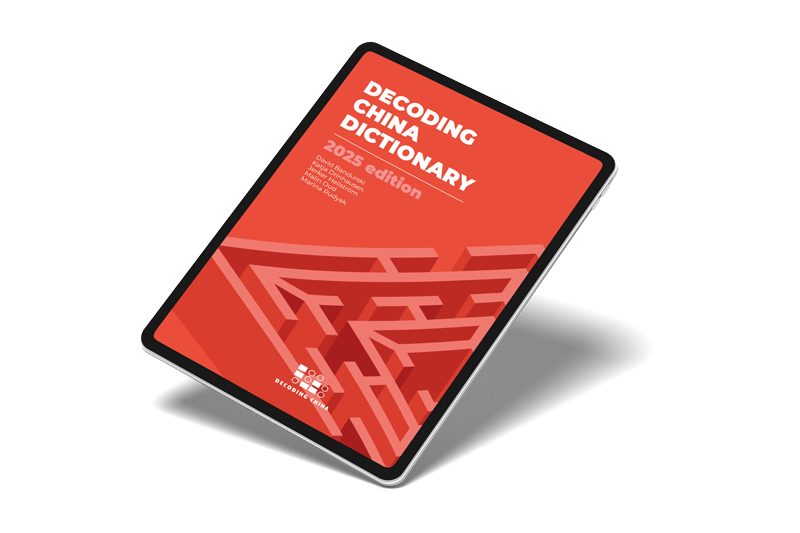
KEY TERM
Stability
[ 稳定 ]
[ 稳定 ]
Stability

Brief
In the 1945 UN Charter, “stability” was regarded as a basic prerequisite for “peaceful and friendly relations among nations”. In international relations, stability is defined as a condition where interstate violence is unexpected and rare. More recently, the concept has figured strongly in UN discussions of development, stressing stable and peaceful societies that protect individual rights regardless of ethnicity or faith. As the UN secretary-general told a gathering in 2014: “Children need to be safe going to school. Women need to be free of violence at home and workplaces.”
While China actively engages with UN discourse on stability, the CCP has understood the concept — even as it relates to development — in more politically laden terms, with three basic strains. First, stability has been inseparable from the CCP’s efforts to manage internal divisions and power struggles. Second, it assumes the inviolable legitimacy of the CCP and its governance model, implying that only the Party can deliver it. Finally, stability has rationalised a coercive system of “stability maintenance” to address deep social divisions domestically, many resulting from rapid development without political reform.
Analysis
For much of China’s pre-reform era under Mao Zedong, stability took a back seat to revolution and power struggle. Even as it suffered at home, the young PRC affirmed itself internationally as a force for stability, defending sovereignty and non-interference.
As China emerged from the Cultural Revolution in 1975, a rehabilitated Deng Xiaoping attempted to calm ideological divisions and revive the economy. The second of Deng’s “Three Directives” for government work was “stability and unity”, which encouraged cessation of intra-Party struggles to focus on building national development. This suspension of the Party’s class struggle displeased Mao: “Without struggle there can be no progress, no peace”, he said. Only three years later, after another round of struggles, could Deng’s vision be realised.
Under Deng in the 1980s, stability meant avoiding rancour to get on with business. Closely tied to reform and development, “economic stability” took centre stage. With economic stability, reforms could proceed; with reforms, economic development could accelerate; and accelerated development offered “an even stronger guarantee of stability”. Stability also meant upholding CCP rule and ceasing internal discord. Deng emphasised “stability and unity” alongside the Four Basic Principles, which committed the nation to socialist rule and CCP leadership. Internationally, China understood stability as ensuring peaceful conditions — particularly between Cold War powers, the US and Soviet Union, but also in US-China relations.
In the late 1980s, Deng’s equation linking reform, development and stability took shape in the slogan, “stability overrides everything”. After Jiang Zemin took power following the June 1989 Tiananmen Massacre, this phrase became ubiquitous, as the crackdown was cast as a “counter-revolutionary riot” and an aberration that interrupted development. Like Deng, Jiang emphasised that “stability overrides everything”. But as the economy boomed through the 1990s, spawning inequality and social unrest, Chinese society came under blanket policing through what the Party termed “stability maintenance” (维护稳定), or weiwen. Under Hu Jintao, mechanisms of pressure and control often provoked the social tensions they sought to suppress, resulting in costly repression and resistance scholars criticised as “rigid stability”.
Since Xi Jinping took power in 2012, stability maintenance has increasingly merged with national security, reflected in the “comprehensive national security concept”, introduced April 2014. This concept has been applied with uncompromising resolve via social management, high-tech surveillance, and repression. Stability concerns drove concerted suppression of democracy protests in Hong Kong from 2014 onward, culminating in a robust national security regime in 2020. In Xinjiang, they prompted unprecedented security measures, including mass detention facilities for ethnic Uyghurs that sparked international condemnation. In 2022, Xi stated that “national security is the foundation of national rejuvenation and social stability is the prerequisite for national strength”. Stability fears have been deepened by structural challenges facing China’s economy, including unemployment, so domestic stability remains closely tied to economic stability.
How to cite the Decoding China Dictionary:
The Decoding China Project (eds.) The Decoding China Dictionary (2025 ed.), 2025. Berlin: The Decoding China Project. Available from: https://decodingchina.eu/.
Research related to this term was supported by:

Related Articles That Might
Interest You






